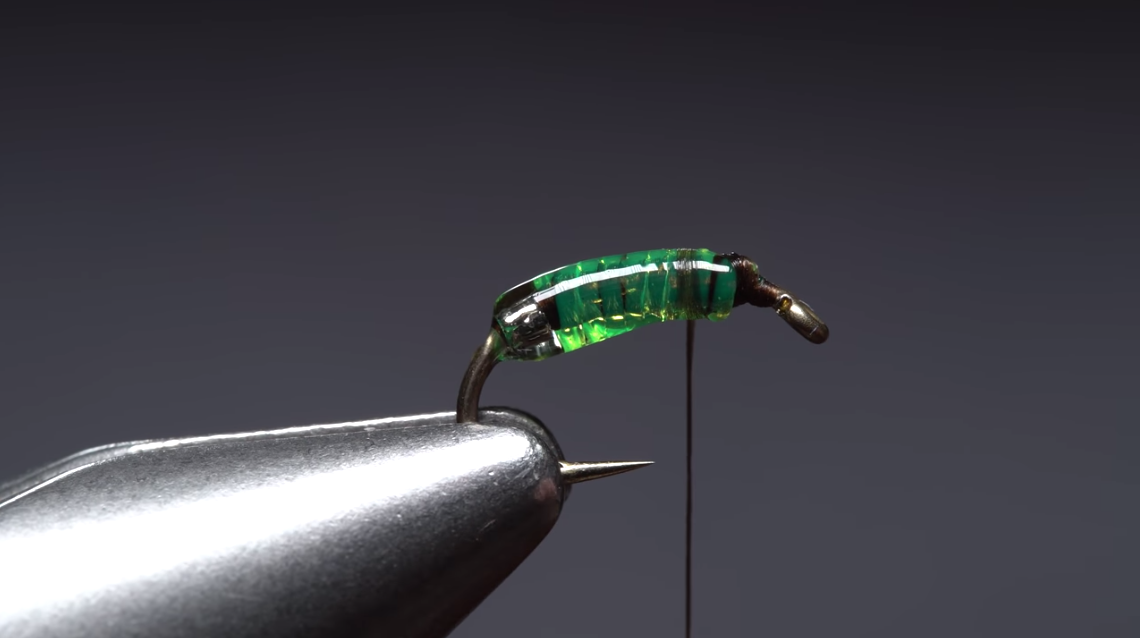The caddisfly life cycle is an important one for trout anglers. Caddis, in every stage of their lives, make up a significant portion of the average trout’s diet.
But, in recent years, I’ve take to fishing less with patterns that imitate the adult bugs — Orvis’ Tom Rosenbauer pointed out to me that bigger trout often won’t waste the energy needed to chase a flitting adult on the surface because the meal is anything but guaranteed. Instead, he suggests (and I’ve listened) fishing caddisflies in other life stages, like an emerging bug, a nymph or a pupa, like the one tied by Tim Flagler below.
This pattern, the Shiney Hiney Caddis Pupa incorporates a couple of interesting tying techniques, and, though it may appear to be difficult to tie, it’s anything but. Watch as Flagler uses a glass bead at the butt of the fly—the intent here is imitate a gas bubble that helps a natural caddis pupa rise to the surface film. Flagler also uses rubber “round rim” to craft the flies body, then a dose of UV resin to harden it up and make it durable.
I haven’t fished this pattern, but with “caddis season” on the immediate horizon here in the West, I plan to. Time to get to the vise and tie a few of these.



